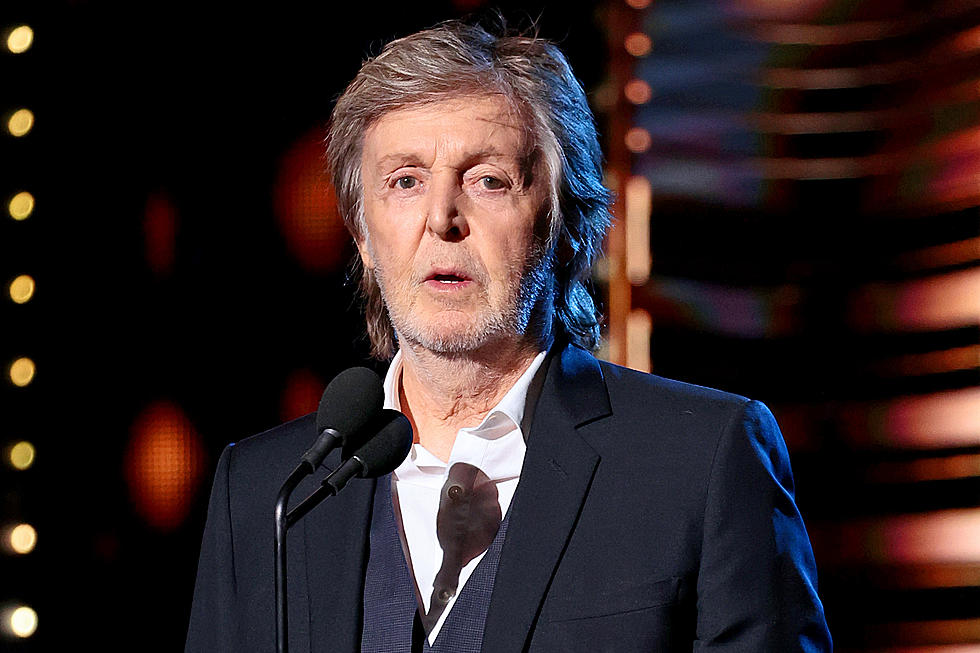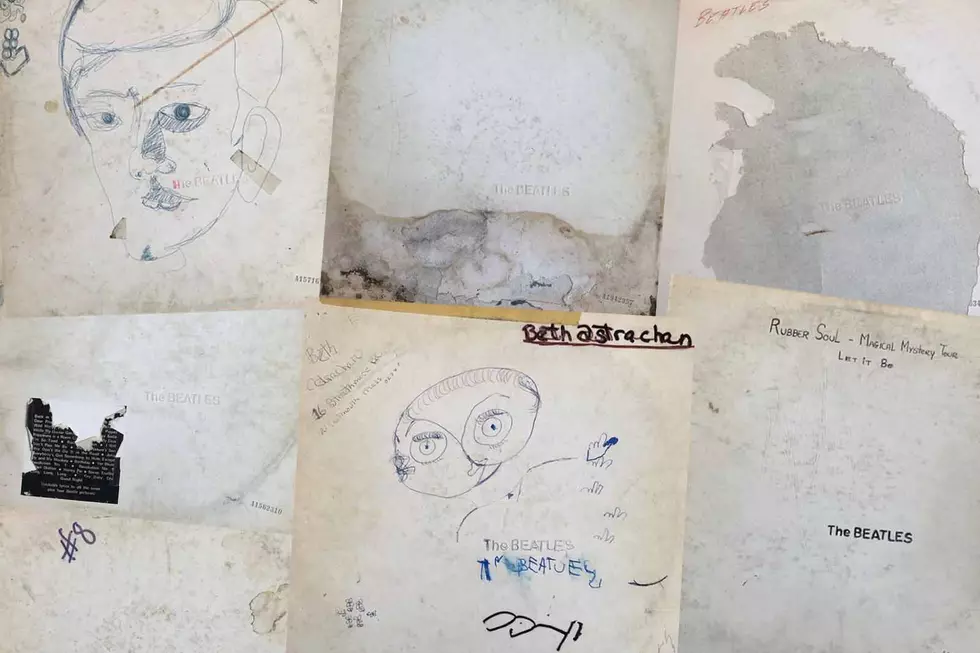
When the Beatles Debuted ‘All You Need Is Love’ to the World
The British Broadcasting Corporation began working on an event of a gargantuan scale in 1966. Capitalizing on the capabilities of satellite technology, the BBC sought to create a global television program that would be beamed out live to the entire world. The Brits would partner with other broadcasters from around the globe, taking turns with live installments.
The show, titled Our World, was eventually announced to take place on June 25, 1967. The special broadcast would feature segments spanning five continents and nearly 20 countries – although that number took a hit when Eastern Bloc nations pulled out a week before the event.
The producers had two stipulations, that nothing would be pre-filmed for broadcast (it would all be live) and there would be no appearances from politicians or statesmen. Our World would focus on each participating nation’s technology, way of life and culture.
Given the Beatles’ rampant popularity all over the globe, it only made sense that they would be spotlighted during the United Kingdom’s segment. The Beatles learned about and accepted the honor in May, just a couple of weeks before the release of Sgt. Pepper’s Lonely Hearts Club Band. At the time, nobody seemed daunted by the prospect of putting together a new composition for live broadcast in a month’s time.
“I don't know if they had prepared any ideas but they left it very late to write the song,” engineer Geoff Emerick recalled in The Complete Beatles Recording Sessions. “John [Lennon] said, ‘Oh God, is it that close? I suppose we’d better write something.’”
Paul McCartney offered up a couple of his newest songs, “Your Mother Should Know” and “Hello, Goodbye,” for consideration, but the decision was made to go with a Lennon original: “All You Need is Love.” Planning for an appearance before an international, multi-lingual audience, the Beatles likely went for the song that expressed a direct and simple message. It’s hard to misunderstand “All You Need is Love.”
No one could have known that the tune would become an anthem for the “Summer of Love.” “This is an inspired song, because they wrote it for a worldwide program and they really wanted to give the world a message,” Beatles manager Brian Epstein said at the time, according to The Beatles Anthology. “It could hardly have been a better message.”
Watch the 1967 Live Broadcast of 'Our World'
As Our World drew nearer, the Beatles and producer George Martin decided that at least some of “All You Need is Love” would need to be recorded before the live broadcast, despite the disapproval of the BBC. After all, the band had just spent half a year experimenting in the studio on complicated recordings that would be challenging to reproduce live. On June 14, the boys laid down some ground work. Because their usual digs at EMI’s Abbey Road Studios were booked, Martin and the Beatles went to Olympic Sound Studios to start a backing track.
“We just put a track down. Because I knew the chords I played it on whatever it was, harpsichord,” Lennon said in Anthology. “George [Harrison] played a violin because we felt like doing it like that and Paul played a double bass. And they can’t play them, so we got some nice little noises coming out. It sounded like an orchestra, but it’s just them two playing the violin and that. So then we thought, ‘Ah, well, we’ll have some more orchestra around this little freaky orchestra that we’ve got.’ But there was no perception of how it sounded at the end until they did it that day, until the rehearsal. It still sounded a bit strange then.”
A few days later, other elements were added to this basic track: more drums from Ringo Starr, banjo from Lennon and piano from Martin, along with some vocals. Somewhere along the way, the band decided to open the track with a bit of “Le Marseillaise” and end with a mish-mash of melodies.
Martin was tasked with arranging the competing orchestral finale, which draws on elements of “Greensleeves,” Bach’s Invention No. 8 in F major and Glenn Miller’s “In the Mood.” As the zero hour approached, the Beatles rehearsed with a small orchestra, whom Martin also recorded onto the backing track. During rehearsals, Lennon came up with the idea of singing a bit of “She Loves You” during the chaotic ending; McCartney actually delivered the lines on the broadcast.
Then the big day arrived. With a camera crew set up at EMI’s Studio 1, starting at just before 9PM local time, the Beatles would feign a rehearsal of the song before producer Martin – also on camera in the control room – would cue the band to begin its final recording of “All You Need is Love.” A gum-smacking Lennon was incredibly nervous about singing before hundreds of millions of viewers. Martin and Emerick felt the same way about their technical responsibilities, something that wasn’t helped when they learned the telecast was running ahead of schedule and were on-camera a bit earlier than expected.
“We actually went on air about 40 seconds early,” Emerick recalled. “George and I were having a welcome shot of Scotch whisky when we got the word over the intercom. There was a big panic to hide the bottle and the glasses. We were shoving them under the mixing console!”
Listen to the Beatles' Completed Studio Version of 'All You Need Is Love'
Still, everything appeared to go smoothly. After a bit of fake rehearsal for the cameras, Martin played his part. He sent in the small group of violinists, saxophonists and brass players, as an announcer intoned, “You’ll notice that the musicians are not rock ’n’ roll youngsters. The Beatles get on best with symphony men.”
He must not have noticed the coterie of “rock ’n’ roll youngsters” sitting cross-legged around the Fab Four, who were set up on large stools, except for Ringo on his kit. The Beatles had invited Mick Jagger, Keith Richards, Marianne Faithfull, Eric Clapton, Keith Moon, Graham Nash and others to participate in what resembled a hippie commune, with ornate dress and fanciful décor. Of course, some of that was lost in the black-and-white broadcast – only later colorized, based on photos, for the Anthology.
As for the recording of “All You Need is Love” – although many elements were on the backing track, some of the recording was done live, including Lennon’s vocal, McCartney’s bass, Harrison’s guitar solo, Starr’s drums and the symphonic accoutrements (the last two adding to previous overdubs). As the song descended into multi-melodic chaos down the stretch, a conga line began to form among the crowd and the image faded out. The Beatles, Martin and everyone involved could breathe easy. Despite the early start, everything had gone as planned.
But Lennon remained unsatisfied. After a post-broadcast party, he remained at EMI to re-record his vocal part. The day before, the Beatles had decided to release “All You Need is Love” as their next single, and John thought he could do a better take for the final version. Ringo also added a drumroll to underscore the song’s introduction, which had originally featured a tambourine. By 1PM the following day, the session was over and the “All You Need is Love” could be mixed.
The song that the Beatles debuted for between 400 and 700 million viewers was released as a single (backed with “Baby, You’re a Rich Man”) on July 7. Not only did “All You Need is Love” shoot to No. 1 in at least 10 countries, it became the slogan for the summer, a mantra for the hippies and a statement for many young people protesting the conflict in Vietnam. It remains one of the Beatles’ most famous songs.
“We were big enough to command an audience of that size, and it was for love,” Starr remembered in Anthology. “It was for love and bloody peace. It was a fabulous time. I even get excited now when I realize that's what it was for: peace and love, people putting flowers in guns.”
The Stories Behind Every Beatles LP Cover
Who Was the Fifth Beatle?
More From WSHK-WSAK 102.1 & 105.3 The Shark










